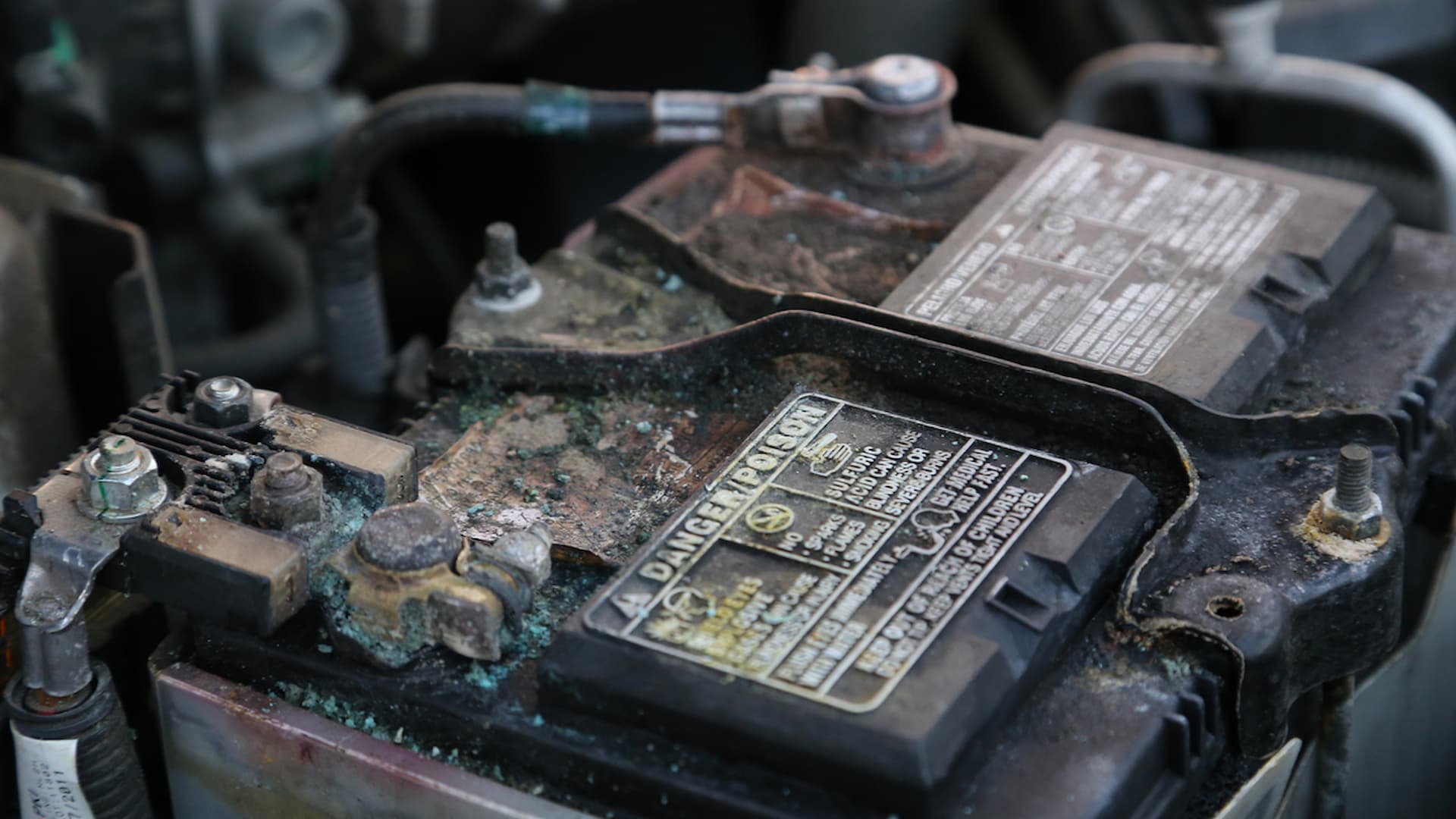P0108: MAP Sensor Circuit High Input
Our mobile mechanics can quickly diagnose a P0108 trouble code and bring the shop to you 7 days a week. Get a quick and fair quote today.

Find Your Cost
What is P0108?
P0108 is an OBD-II diagnostic trouble code (DTC P0108) that means “Manifold Absolute Pressure (MAP) sensor / Barometric pressure (BARO) sensor circuit high input.”
The manifold absolute pressure sensor measures the change in atmospheric pressure in the intake manifold. It’s situated either on or next to the throttle body assembly.
Some vehicles use the MAP sensor in tandem with an IAT sensor (Intake Air Temperature). Some cars substitute both with a MAF sensor (Mass Air Flow).
Through its signal wire, the MAP sensor provides manifold pressure data to the powertrain control module (PCM) or engine control module (ECM). The PCM uses this data along with engine speed and measurements from other sensors (like the IAT sensor and ECT sensor) to manage the engine’s ignition spark timing and air fuel ratio.
When the P0108 code appears, it means your vehicle’s power train control module or ECM has detected an unusually high voltage sensor signal from the manifold absolute pressure sensor.
If the voltage reading from the sensor to the power train control module stays above 4.5 volts for more than 10 seconds when the oxygen sensor, engine speed (RPM), and throttle position values change, code P0108 manifold absolute pressure sensor circuit high input is set.
This high MAP sensor voltage is not a suitable condition for the engine to work with input from the Throttle Position Switch (TPS).
Furthermore, bad data from the MAP sensor to the powertrain control module or the ECM can cause the fuel pump and ignition switch to malfunction.
Common symptoms
The P0108 code will often show up accompanied by a host of noticeable symptoms — which can seriously impact your car’s driveability.
Here are some of the key symptoms of the DTC P0108 error:
1. Check Engine Light Turns On
The check engine light is a primary symptom of the P0108 code but is also an indicator of many other problems. To confirm that it’s exactly related to the trouble with the manifold absolute pressure sensor, you’ll have to ask your mechanic to scan your vehicle using an OBD-II tool.
2. Poor Engine Performance
A problem with the MAP sensor circuit can also translate to poor engine performance. Your car might have trouble starting up, stall randomly, idle at high RPMs, and even hesitate when accelerating.
This happens because the MAP sensor doesn’t work well with the throttle position sensor, and the power train control module receives a bad sensor signal. As such, the PCM cannot correctly determine engine load, leading to a poor air fuel ratio.
3. Reduced Fuel Economy
Issues with your manifold pressure sensor circuit can mess with the air fuel ratio of your car. A bad MAP sensor causes the engine to over consume fuel and reduces your vehicle’s fuel efficiency.
Can I still drive?
No, you shouldn’t drive with a P0108 code.
A high input from the MAP sensor circuit is a problem that can directly affect your engine’s performance and cause it to run poorly. Poor fuel consumption due to a bad air fuel ratio, misfiring from incorrect ignition spark timing, idling roughly, and trouble when starting the car can lead to permanent engine damage.
If you notice any of these symptoms, or if your check engine light turns on — you should get a mechanic to check your car immediately.
P0108 causes
A P0108 code can pop up due to a list of problems.
Here are some of them:
- A faulty manifold absolute pressure sensor
- MAP/BARO sensor working in a restricted vacuum space
- Rusted, faulty or loose wiring within the manifold absolute pressure sensor circuit
- Damage to a vacuum hose
- Clogged or defective catalytic converters
Diagnosis
Since scanning and determining the causes for trouble codes can be tricky, you should leave it in the hands of a qualified mechanic.
To diagnose a trouble code, mechanics use an OBD-II scanner. Once your mechanic scans and resets the P0108 code, they can conduct a road test to see if the code registers again while driving.
If the trouble code does come back, mechanics usually conduct a map sensor voltage test and use a multimeter to check the voltage reading to the manifold absolute pressure sensor and the ECM.
The engine is left idle at first to obtain the voltage reading from the circuit. Then the engine load and engine speed are gradually increased during the test.
If the power supply to the ECM goes beyond a certain threshold, there is likely a problem with the MAP sensor circuit, and it needs replacement. The mechanic may also check the MAP sensor wiring harness for physical damage.
Common Misdiagnoses of P0108
Not every instance of the DTC P0108 requires a MAP sensor change. When technicians don’t correctly follow the test procedure, they might make some of these common misdiagnoses:
- Replacing the MAP sensor when there is an intake manifold vacuum leak
- Misdiagnosing an EGR valve that is stuck open
- Replacing the manifold absolute pressure sensor when the idle air control motor is defective and causes a significantly low engine idle
Possible repairs for P0108 & Costs
When it comes to the P0108 trouble code, there isn’t a single solution that can fix everything — since the P0108 code has a variety of causes.
Your mechanic must identify the cause of the trouble code before engaging in repairs.
Although the first thing that comes to mind for a P0108 is a faulty manifold absolute pressure sensor, other repairs may fix your trouble code:
- Reset the trouble code — This works when high mileage cars have momentary MAP sensor problems during start-up or when the drivetrain is stressed for an extended period.
- Check each MAP sensor connector and wire harness — Your mechanic can remove the wiring harness and wire harness connector to check the MAP sensor’s wiring and connector set for shorts, burnt areas, and loose connections within the circuit.
- Clean or replace the air filter — A clogged or dirty air filter can cause a MAP sensor to malfunction.
- Check each vacuum hose and the inlet air ducting — A damaged or dislodged vacuum hose can also affect the performance of your MAP sensor.
- Repair or replace damaged catalytic converters — A damaged catalytic converter is one of the main causes of the P0108 code, so it’s essential to check them for any clogs and other problems.
- Replace the MAP/BARO sensor — Once all the above steps are completed, your mechanic can decide if a faulty manifold pressure sensor is the cause of the trouble code and whether it needs to be replaced.
In rare cases, a faulty powertrain control module, ECM or ECM connector could also be why you encounter a P0108 code. However, replacing a PCM or ECM is costly, and you should exhaust all other options before you decide to replace the engine computer.
How It Works
Tell us about your vehicle
Select your vehicles year, make, and model and the repair service you need.
Book online
Get a free quote, book an appointment, and speak to a specialist – all online!
Schedule your repair
Pick a time that works best for you and our mobile mechanics will bring the shop to you.

Related Repairs
Not sure? Let us diagnose
We're here to keep you moving
Our experienced mobile mechanics are ready to help.
Get a Quote1-Year | 12,000-Mile Warranty


